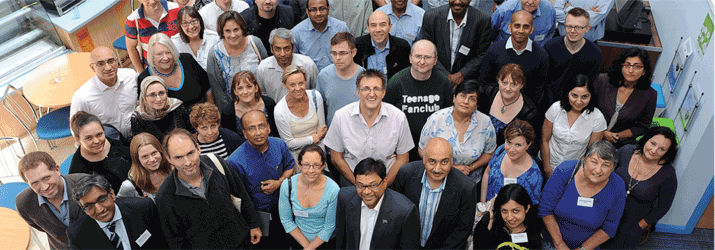
To paraphrase, the general neurologist who is tired of headache is tired of neurology. However, I imagine all of us have felt a little worn when seeing the polysymptomatic patient rereferred with intractable headache. Nevertheless, headache patients are part of the reason I became a neurologist.
When a house-officer in Sheffield, a consultant wisely told me that one might do worse than choose a specialty on the basis of how one could cope with the boring parts of the job (his words not mine). He pointed out that every patient with headache is different and that one must always listen to their story – in contrast to specialties in which one can treat the patient with scant regard whilst managing their figures – be that creatinine, blood pressure or peak flow (friends who are renal physicians etc will hopefully forgive my calumny). Certainly, when a primary headache consultation goes well, we all enjoy the satisfaction of knowing that how we gave our explanation and negotiated the plan was as important to the patient as the promise (or not) of the scan and tablets.
I should begin my report by saying how much I enjoyed the course and how confidently I would recommend it. I will outline the topics covered and some learning points that stood out for me.
The course opened with a practical guide to acute headache in the emergency department – not just subarachnoid haemorrhage – and went on to cover the most intractable of chronic headaches. Migraine was covered in appropriate detail from pathophysiology to current and future management; summarising it as a disorder of brain pain processing, with evidence for the molecular pathways from current and future treatments. Calcitonin gene related peptide (CGRP) release from trigeminal ganglion culture is inhibited by triptans and CGRP antagonism shows efficacy in migraine. Typical of the course, this was excellent revision of core material with an ample sufficiency that was new to me. There were also sessions on the other major primary headaches. Excellent case based sessions were well planned to give a structured approach to spotting the red flags for secondary headache – for example, episodic headache and visual loss, initially attributed to migraine aura but not consistent with this because aura is binocular – and this was monocular acute angle closure glaucoma. Alex Sinclair, Birmingham, gave an excellent overview of idiopathic intracranial hypertension from diagnosis to management. As with the majority of the course, this lecture was accompanied by a useful handout.
So, very artificially choosing from much excellent material, my top three learning points: Acetazolamide shows no evidence of clinically significant benefit in two studies in idiopathic intracranial hypertension – so we are free to use better tolerated and symptomatically superior agents.
A reminder of the MHRA decision that domperidone 20mg PO TDS is contraindicated due to arrhythmic risk.
Paroxysmal hemicrania can look like cluster headache – perhaps always try indomethacin.
It was interesting to hear that this was the first year in which consultants have outnumbered registrars among the delegates. Perhaps they would have been struck by a different range of learning points, however, the delegate mix certainly highlights the quality of the course. To conclude, especially for those of you who have skipped the body of my report, suffice it to say that I would heartily recommend the Keele Headache Course.
ACNR 2014: 14(4). Published online 30/9/14

